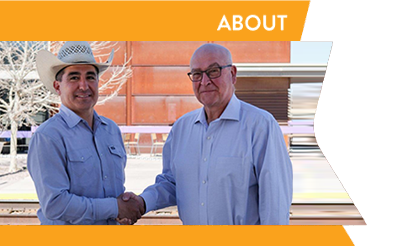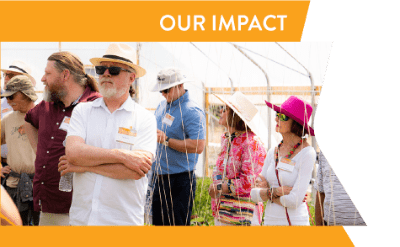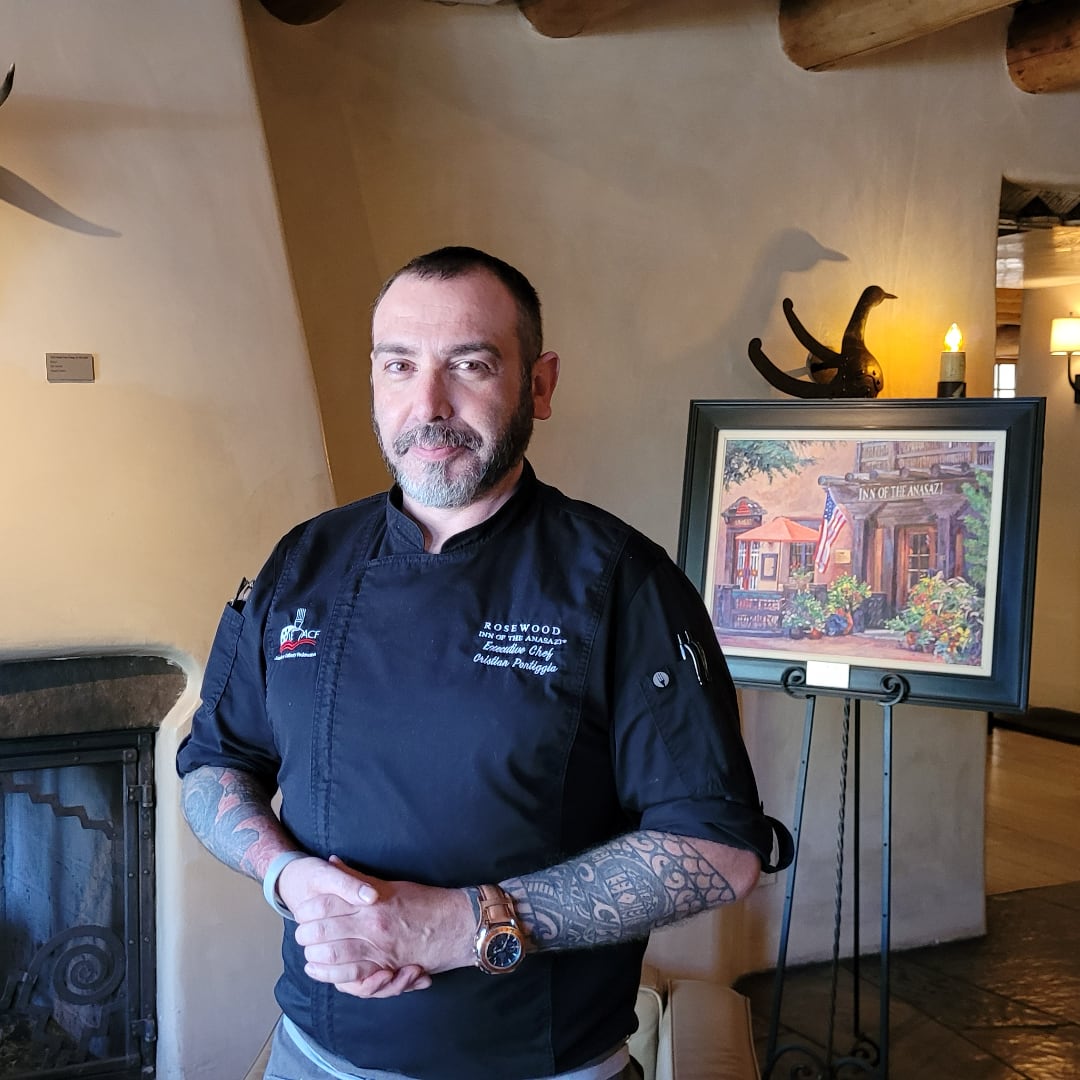Meet the chef: Cristian Pontiggia
Chef Cristian Pontiggia Dishes on His Craft and the Power of Local Food
Since taking the helm as executive chef at the Rosewood Inn of the Anasazi, Cristian Pontiggia has been quietly reshaping the restaurant’s culinary identity—one inventive experiment at a time. The dining room’s steady buzz, even during off-hours, suggests Santa Fe diners are already embracing this new chapter. Cristian’s innovative approach ensures his cuisine is never boring. Using fresh, local produce sourced through his many relationships with New Mexico farmers, he has tried numerous “experiments” that have become permanent menu fixtures. And even as he keeps changing his menu to satisfy his own thirst for innovation, fans from his tenure at Sassella will still find a few favorites he has brought with him. Though a James Beard Award semi-finalist, Cristian is modest. On the afternoon of our interview, he greeted me with a warm smile, and when asked how to pronounce his name, offered a quick, proper version before adding, “but it really doesn’t matter. Just call me ‘Chef.’” The following interview has been edited for readability and brevity.
Santa Fe Farmers’ Market Institute: You’ve mentioned trying to establish a new culinary identity for the Rosewood Inn of the Anasazi restaurant, but you have a lot of fans who followed you here from Sassella. Are you bringing any menu items from there or are you starting fresh?
Cristian Pontiggia: Ever since I was working at El Nido, I’ve always loved to incorporate local items and mix them in with Italian and Asian food. I travel so much for my profession, and it’s not so much the identity of where I work, but the identity I’ve discovered from all my traveling [that inspires me]. One of the amazing things we can do now is have food from every part of the world. We can have fish overnighted from Japan, etc. The ability to experiment by combining New Mexico ingredients with items from another part of the world is amazing.
I remember my first green chile pizza. For me, an Italian, I had never had pizza with green chile, and I said, “Oh, that’s going to be bad.” But I swear, when I had the first slice I was in love with green chile. Green chile became one of the ingredients I love so much. And I’d never had it before in Europe in general. But just like how I discovered green chile pizza, I want people to discover items from other parts of the world with New Mexico elements.
So, it’s almost a fusion of localities, then, where food that is local in different parts of the world is combined to make something new.
That, I think, is the best way to cook– to incorporate local ingredients with an item or a recipe from another part of the world. It’s a new experience for me, and for the customer as well. I try to find a combination that doesn’t exist yet.
You’ve said before that your dishes can depend on the customer, the ingredients you have on-hand, or even how you’re feeling at the time you cook them.
Yes. For me, when I started this career, it was just about pleasing the customer with the cooking. But with experience, you start to cook in a different way and try to engage your memory and the love you have. For example, I create different dishes thinking about my son. He is the love of my life. My son is everything for me. [You call on] memories about your family, your grandma and stuff like that. It’s not just cooking the food, it’s cooking with emotion. And the emotion that you have cooking that dish creates something really different. It can sound really cheesy, but at the end of the day, the secret ingredient is love.
I think what goes in the food is your personal experience– sadness, happiness, whatever it is, you create it in that dish. And it’s not the case for every dish, but some dishes you really put in that emotion, or there’s a reason why you put that one on a menu, etc.
I know in the past you’ve mentioned the importance of the people who work in your kitchen. But how important are the farmers who grow the food that gets used in that kitchen to construct your dishes?
If you think about it, a job is a job, but people make the difference in every single area. And I have so much respect for the job of a farmer. They wake up early and they work under the sun, and sometimes nature doesn’t let their product grow. There are so many variables. It’s a tough job, and it’s a job that many people don’t understand how tough it is, or that everything has a season, etc. It’s always something to keep in consideration.
Have you formed any relationships with local farmers that you feel are good sources for fresh, local ingredients?
I work in different places in New Mexico, and depending on where I am, I have a good relationship with [the farmers there]. I don’t want to mention all the names, it’s a giant list, but there are a lot of people I love that are growing items I use on my menu in New Mexico.
You’ve mentioned that seasonal produce is important to your menu. How do you use those seasonal ingredients and do you change your menu for what’s in season?
I like the seasonal ingredients for sure. One of my favorite fruits ever is figs. When it’s fig season, I love to use the figs so much. But it’s same with New Mexico produce. The fruit, for example—it’s surprising sometimes. It’s so good—the peaches, apples, apricots, etc. Fruit is one of the really important things for my menu. I use fruit in many different items.
You went to art school, and you’ve mentioned that you think of your plates as being like paintings. Can you speak to how the beautiful local produce here in New Mexico inspires your painting palette, so to speak?
It’s not just about the colors, but also about what we smell on a plate. When I go to visit a farm—it can be a stupid example, but you just take a leaf of basil and you roll it between your hands and smell it. It’s amazing.
Most people don’t think about the importance of every single item on the plate. [Customers] just see a plate arrive, but there are so many people contributing to all the ingredients of that plate. Sometimes I can’t even imagine how many people [were needed to produce] just one of the ingredients. And after you combine them, it’s crazy the amount of people needed to finish a plate.
Is there anything else you would like to share about the importance of locally-sourced ingredients?
I like to support the community and the state in general. I’ve lived in New Mexico for 17 years now. It has become my home, big time.
And it’s important to understand where ingredients come from. It’s an economical system—an economical ecosystem that has to be protected. If we start to import everything, it’s going to be a problem for people’s survival, even. There will be a disconnect with what is an organic product vs. something that’s not organic or local.
What a shame it would be if we no longer had fresh, local food, right?
Correct. And plus, I think farmer is one of the toughest jobs in the world. Like my grandfather—he had this big garden. Between my grandfather having the garden and my mom being not the best cook is why I decided to be a chef.
But it’s really important to understand what people do and what they do for us. [Farmers] do a job that’s so tough. We need to have a lot of respect for them from that perspective.
And those farmers grow the ingredients that you are then able to use to do your art, so, like you’ve mentioned, it is a whole ecosystem.
Somebody can call it art. For me, it’s just cooking. But it’s the final product. It is the composition. We try to please the customer with the visual, too. Some people will like it, some people won’t. But the important thing is, believe in what you do and experiment.
I’ve never been a fan of having too many rules. With food, there are no rules. Just like with music, with painting, etc. Do whatever you want. Of course, it has to make sense at the end of the day. But with cooking, it’s not uniform. It’s so open to experimentation.
I don’t want to be closed in a box where I have to make items that are the same at a thousand places. It’s a personal achievement to try to create something that doesn’t exist. And most of the time, it works.






